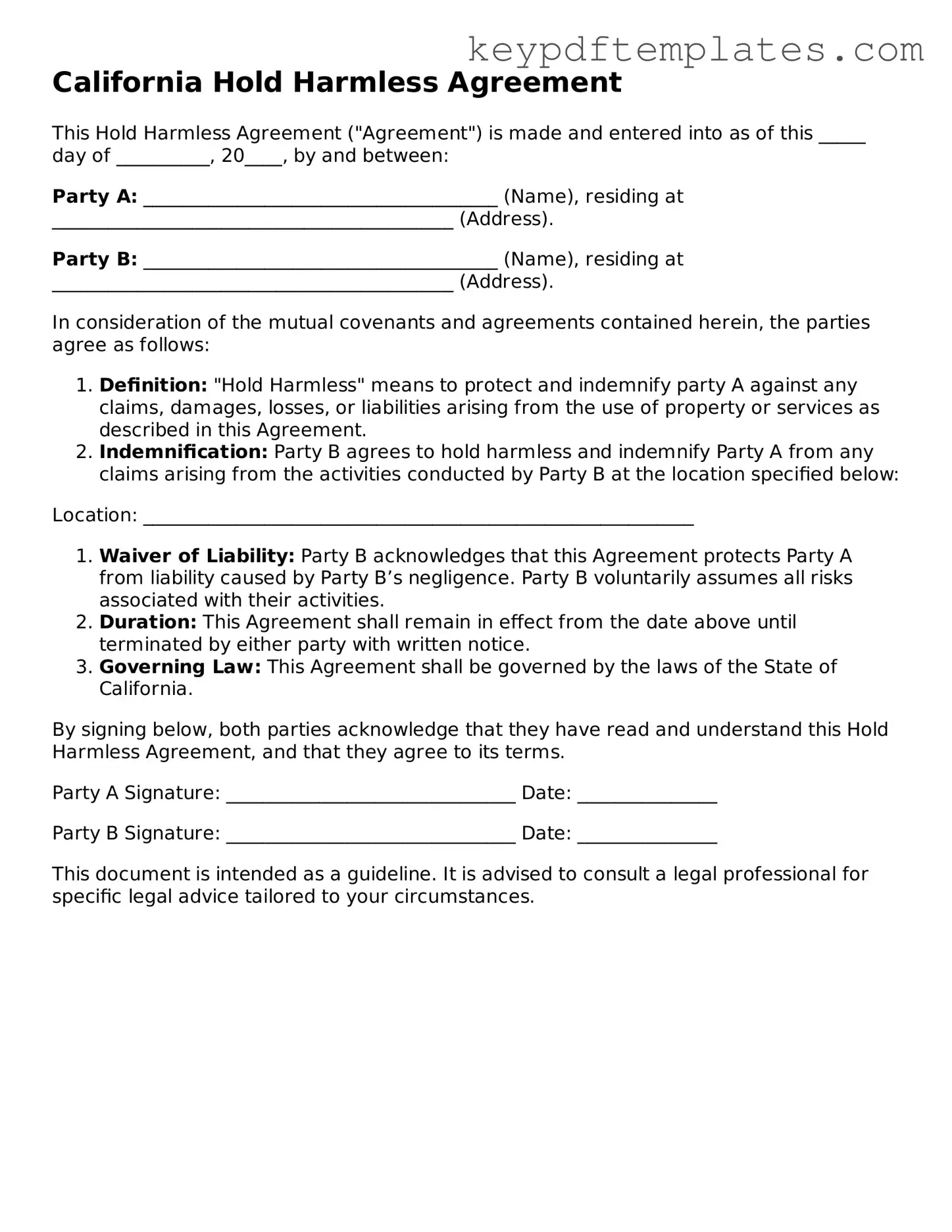Legal Hold Harmless Agreement Document for the State of California
The California Hold Harmless Agreement is a legal document that protects one party from liability for damages or injuries caused by the actions of another party. This form is commonly used in various situations, including rental agreements and event planning, to ensure that individuals or organizations are not held responsible for unforeseen incidents. Understanding the nuances of this agreement is crucial for anyone looking to engage in activities that involve potential risks.
Modify Document Online
